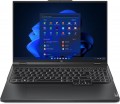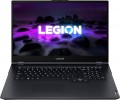Screen size
Diagonal size of laptop display.
The larger the screen, the more convenient the laptop for watching high-definition movies, modern games, working with large-format graphic materials, etc. Large screens are especially important for multimedia and gaming models. On the other hand, the diagonal of the display directly affects the size and cost of the entire device. So if portability is key, it makes sense to pay attention to relatively small solutions; especially since most modern laptops have video outputs like HDMI or DisplayPort and allow connection of large-format external monitors.
In light of all this, the actual maximum for laptops these days is
17"(17.3"); however
larger devices (18") reappeared at the beginning of 2023. The standard option for general purpose laptops is
15"(15.6"), less often
16", a diagonal of
13"(13.3") or
14" is considered small by the standards of such And smaller screens can be found mainly in specific compact varieties of laptops — ultrabooks, 2 in 1, transformers, netbooks; among such devices there are solutions for
12 ",
11" and even
10" or less.
Screen resolution
The resolution of the screen installed in the laptop — that is, the size of the screen in pixels horizontally and vertically.
Higher resolution, on the one hand, gives a sharper, more detailed image; on the other hand, it increases the cost of the laptop. The latter is connected not only with the cost of the displays themselves, but also with the fact that in order to work effectively at high resolutions, you need the appropriate filling (primarily a graphics card). This is especially true in games; so if you are looking for a laptop with a high-resolution screen that can effectively "run" modern games — you should pay attention not only to the characteristics of the display, but also to other data (the type and parameters of the graphics card, test results, the ability to work with certain games — see everything below). On the other hand, if the device is planned to be used for simple tasks such as working with documents, surfing the Internet and watching videos, you can not pay much attention to the “hardware” parameters: anyway, they are selected so that the laptop is guaranteed to be able to cope with such tasks on full resolution of the "native" screen.
As for specific numbers, the resolution options that are relevant today can be divided into 3 groups:
Full HD (1080),
Quad HD and
UltraHD 4K. Here is a more detailed description of them:
...— Full HD (1080). Initially, the Full HD standard provides a frame size of 1920x1080, and it is this resolution that is most often used in laptop screens from this category. However, in addition to this, other resolution options are also included in this format, where the vertical size is at least 1080 pixels, but does not reach 1440 pixels. Examples include 1920x1200 and 2560x1080. In general, Full HD displays provide a good balance between cost, image quality and laptop hardware requirements. Because of this, nowadays they are extremely widespread; matrices of this standard can be found even in low-cost devices, although they are mainly used in more advanced technology.
— Quad HD. A transitional option between the popular Full HD 1080 (see above) and the high-end and expensive UltraHD 4K. The vertical size of such screens starts from 1440 pixels and can reach 2000 pixels. Note that QuadHD resolutions are especially popular in Apple laptops; most often, such devices have 2560x1600 screens, although there are other options.
— Ultra HD 4K. The most advanced standard used in modern laptops. The vertical size of such screens is at least 2160 dots (up to 2400 in some configurations); the classic resolution of a modern UltraHD matrix is 3840x2160, but there are other values. Anyway, a 4K display allows for high image quality, however, it costs accordingly — including due to the corresponding requirements for a graphics adapter; in addition, to work with high resolutions, it can be more convenient to connect an external monitor to the laptop. Thus, such screens are used relatively rarely, and mainly among premium laptops.Refresh rate
The frame rate supported by the laptop screen. In fact, in this case we are talking about the maximum frequency; the actual frame rate may be lower than this value, depending on the content being displayed — but not higher.
Theoretically, the higher the frame rate, the smoother the movement on the screen will look, the less moving objects will be blurred. In fact, the situation is such that even in relatively modest modern laptops,
60 Hz matrices are installed — in general, this is quite enough for the human eye, since a further increase in speed (
90 Hz and higher) does not significantly improve the visible “picture”. However, in high-end gaming and multimedia models designed for demanding users, higher values —
120 Hz,
144 Hz,
165 Hz and even
higher, namely
240 Hz and
300 Hz.
Contrast
The contrast of the screen installed in the laptop.
Contrast is the largest difference in brightness between the lightest white and darkest black that can be achieved on a single screen. It is written as a fraction, for example, 560:1; while the larger the first number, the higher the contrast, the more advanced the screen is and the better the image quality can be achieved on it. This is especially noticeable with large differences in brightness within a single frame: with low contrast, individual details located in the darkest or brightest parts of the picture may be lost, increasing the contrast allows you to eliminate this phenomenon to a certain extent. The flip side of these benefits is an increase in cost.
Separately, we emphasize that in this case only static contrast is indicated — the difference provided within one frame in normal operation, at constant brightness and without the use of special technologies. For advertising purposes, some manufacturers may also provide data on the so-called dynamic contrast — it can be measured in very impressive numbers (seven-digit or more). However, you should focus primarily on static contrast — this is the basic characteristic of any display.
As for specific values, even in the most advanced screens, this indicator does not exceed 2000: 1. But in general, modern laptops have a rather low contrast ratio — it is assumed that for tasks that require more advanced image characteristics, it is more...reasonable to use an external screen (monitor or TV).
Colour gamut (sRGB)
The colour gamut of the laptop matrix according to the Rec.709 colour model or according to sRGB.
Colour gamut describes the range of colours that can be displayed on the screen. It is indicated as a percentage, but not relative to the entire variety of visible colours, but relative to the conditional colour space (colour model). This is due to the fact that no modern screen is able to display all the colours visible to humans. However, the larger the colour gamut, the wider the screen's capabilities, the better its colour reproduction.
Specifically, sRGB and Rec.709 are the most popular of today's colour models; they have the same range and differ only in the scope (sRGB is used in computers, Rec. 709 is used in HDTV). Therefore, the closer
the colour gamut is to 100%, the more accurately the colours on the screen will match the colours that were originally intended by the creator of the film, game, etc. At the same time, note that such accuracy is not particularly needed in everyday use — it critical only for professional work with colour; and even in such cases, it is more convenient to buy a separate monitor with a wide colour gamut for a laptop, rather than looking for a laptop with a high-quality (and, accordingly, expensive) matrix.
Colour gamut (NTSC)
The colour gamut of the laptop matrix according to the NTSC colour model.
Colour gamut describes the range of colours that can be displayed on the screen. It is indicated as a percentage, but not relative to the entire variety of visible colours, but relative to the conditional colour space (colour model). This is due to the fact that no modern screen is able to display all the colours visible to humans. However, the larger the colour gamut, the wider the screen's capabilities, the better its colour reproduction.
Specifically, NTSC is one of the first colour models created back in 1953 for colour television. It is not used in the production of modern LCD matrices, but is used to describe and compare them. NTSC covers a wider range of colours than sRGB, which is standard in computer technology; therefore, even a small number of percentages in this case corresponds to a fairly wide coverage. For example, a value of
72% or more in NTSC is already considered a good value for use in design and graphics. At the same time, the same NTSC figures on different screens may correspond to different sRGB figures; so if accurate colour reproduction is decisive for you, these details should be clarified before buying.
Also note that among individual monitors, it is easier to find a screen with a wide colour gamut; while it will also cost less than a laptop with similar display characteristics. So choosing a laptop with a h
...igh-end screen makes sense mainly when portability is as important to you as high-quality colour reproduction.TÜV Rheinland certificate
Laptop display certification for safe blue light emission levels and panel flicker rates.
The presence of a TÜV Rheinland certificate confirms that the screen is comfortable for the eyes.
TÜV Rheinland is a large international concern headquartered in Cologne, Germany, providing a wide range of audit services. The company's specialists have developed and approved a number of tests for the compliance of the screens of mobile devices, monitors and TVs with the required level of eye protection from the harmful effects of display radiation on the user's vision on the other side of the screen. The authoritative opinion of TÜV Rheinland is respected in the tech community. Certificates from this body are issued to successfully tested electronics for the implementation of blue light filtering and screen flicker suppression technologies.
NVIDIA G-Sync
Laptop support for
NVIDIA G-Sync technology.
This feature is only found on models equipped with discrete NVIDIA graphics cards. It is used to match the frame rate of the screen and the frame rate of the signal arriving at it — so that these frequencies match. This avoids flickering, twitching, and other image artifacts that can occur due to out-of-sync. This feature is especially useful for games where the frame rate of the video signal can "float" depending on the load on the graphics core; in fact, most laptops with G-Sync are specifically for gaming.
A similar solution for AMD video cards is called FreeSync.
Model
The specific model of the processor installed in the laptop, or rather, the processor index within its series (see above). Knowing the full name of the processor (series and model), you can find detailed information on it (up to practical reviews) and clarify its capabilities.

